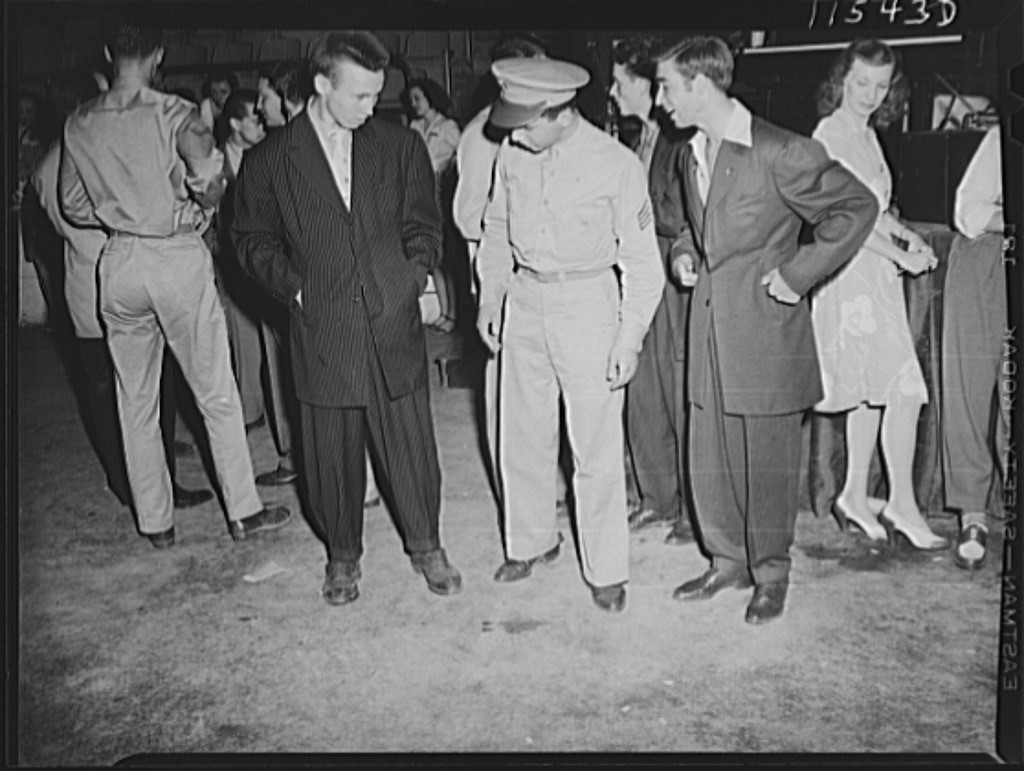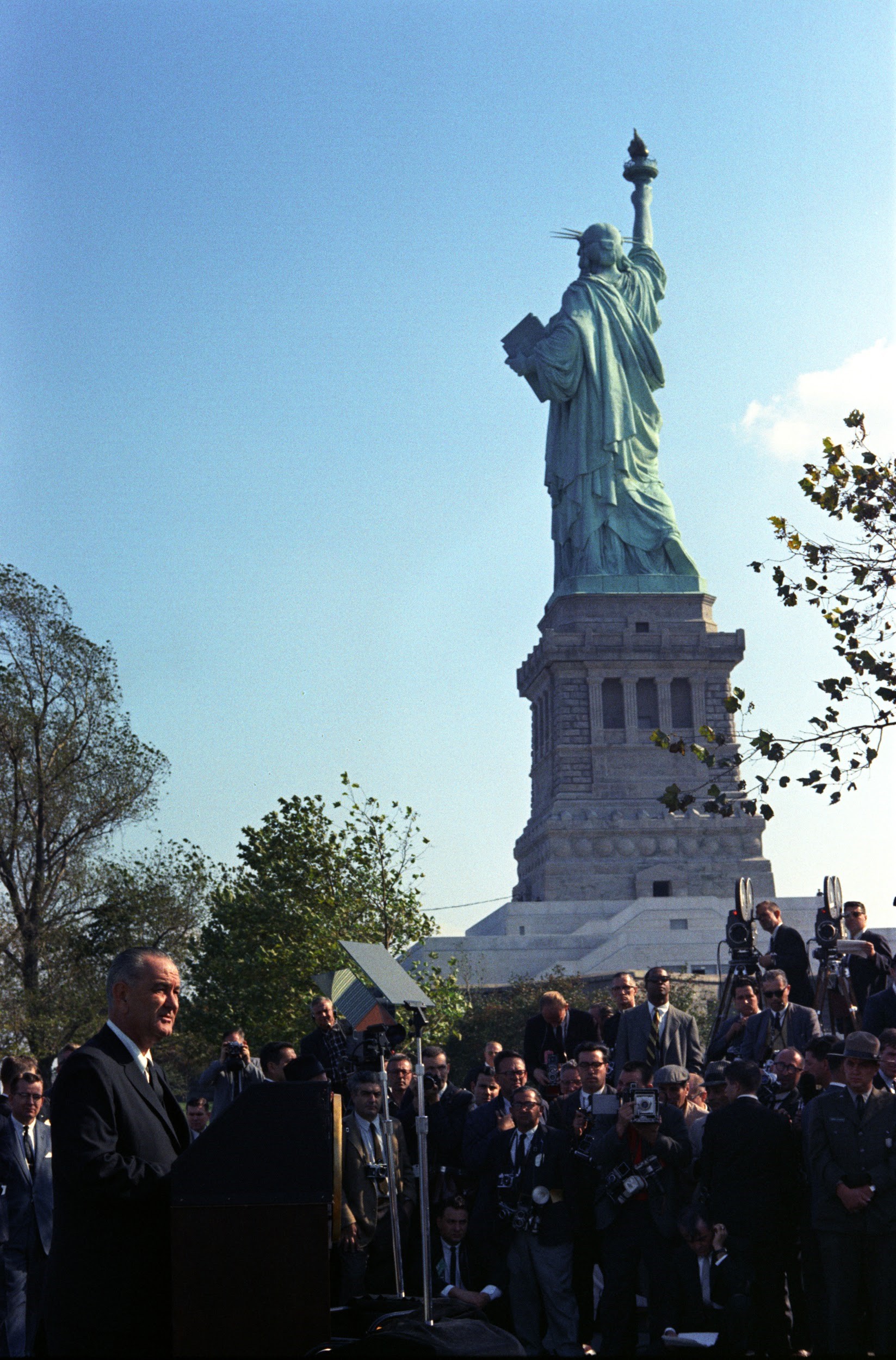Table of Contents |
During the first half of the 20th century, U.S. immigration policy included quota requirements based on nationality.
Additional Resource
View the immigration timeline at the Library of Congress to see how immigration laws and regulations have changed between 1786 and 2001.
The National Origins Act of 1924 limited annual immigration from a country to 2% of the number of U.S. residents from that country, as counted in the 1890 Census. Policymakers used the 1890 Census to favor immigrants from Northern and Western Europe over those from Southern and Eastern Europe, who were arriving in much larger numbers by 1900. This was done to preserve cultural homogeneity in the United States. The National Origins Act significantly reduced the number of Southern and Eastern Europeans who were eligible to immigrate.
However, the act did not set quotas for immigrants from Latin America. As a result, the ongoing demand for migrant farm workers by agribusinesses in the Southwest led to a large influx of immigrants from Latin America, especially Mexico.
EXAMPLE
Beginning in 1942, the United States and Mexico instituted the bracero program. Originally implemented to address the needs of agricultural producers for manual labor during World War II, the program lasted until 1964. While it was in effect, approximately 4.5 million Mexicans migrated to the United States under federally sponsored labor contracts.American farms participating in the bracero program were required to provide adequate housing and fair wages to migrant laborers. However, this sometimes did not happen because of racial discrimination. Migrant laborers found it difficult to unionize or otherwise secure better conditions. The bracero program did not provide a “path to citizenship” for migrant laborers. When the harvest seasons were over, laborers were required to return to their home countries.
One of the most important legacies of the bracero program was the increase in the Mexican American population in the American Southwest, especially in Southern California and Texas. Many of these new arrivals lived in ethnic neighborhoods, or barrios, in Los Angeles and other cities in the region.

Immigration reform and a renewed effort to improve the working conditions for migrant laborers would not occur until the Civil Rights Movement and President Lyndon B. Johnson’s Great Society.
In 1965, the Johnson administration enacted the Immigration and Nationality Act, which outlawed the quota system and overturned restrictions on immigration from Southeastern Europe and Asia. Instead of basing immigration status on race or national origin, the new law focused on skills and family reunification.
EXAMPLE
Under the Immigration and Nationality Act, the United States gave preference to immigrants who had family members living in the country and immigrants who possessed valuable skills.
The act also set an annual limit on immigrants from Mexico and other Latin American nations. This limitation reinforced the perception that most Mexican immigrants were unskilled workers with little to offer besides cheap labor. Migrant workers continued to receive low wages and remained vulnerable to exploitation by commercial farmers.
Although the Civil Rights Movement focused national attention on the struggle of Black Americans for equality during the 1950s and 1960s, other minority groups also mobilized at that time to secure their rights. The Mexican American civil rights movement, among others, came to be associated with identity politics.
Unlike the African American civil rights movement, Mexican American and Latino activism focused on labor-related issues. This included an effort to organize migrant farm workers, who, during the mid-20th century, came from a number of countries in Latin America and Asia.
A high-profile struggle regarding immigrant labor began in the fields of California during the 1960s. In 1962, César Chavez and Dolores Huerta founded the National Farm Workers Association (NFWA). In 1965, when Filipino grape pickers in California went on strike, workers organized by the NFWA also went on strike. Under Chavez’s leadership, the striking workers formed a new organization: the United Farm Workers (UFW).

As the strike continued, the UFW asked consumers to boycott grapes and other produce. It was supported by Latino communities throughout the country, and it exposed the poor conditions in which migrant laborers worked.
In the following testimony (from a 1969 Senate hearing), Rudolfo Juarez, a Mexican American migrant laborer who worked in Florida, talked about his experiences:
Rudolfo Juarez, Mexican American Migrant Laborer
“Of all the groups living in poverty, the migrant farm worker and his family in general suffer the greatest socioeconomic deprivation. The migrant farm worker and his family travels throughout the Nation, living from day to day, depending upon his luck that the crops are good and that nothing happens, for instance, while he travels on the road.
. . . when crops are over in the State of Florida, there is no way that he can continue to survive, so he migrates. And because of that the migrant farm workers have had great difficulties in their employment relationships, much of this arising out of exploitation and abuse by irresponsible farmers and crew leaders who sometimes underpay them, short count them, and overcharge them for transportation . . . .
His mobility deprives the migrant of many of the basic social services that are available to the local poor such as welfare, medical coverage and care, vocational rehabilitation, and daycare for children. More than often his housing does not meet code standards . . . .
What this system and our society is going to have to know and understand is that the migrant farm worker, even though tired, uneducated, hungry, and sick, have contributed and sacrificed just as much as anyone else and more than most to this Nation. We have cultivated this earth, planted and harvested all crops for generations in order to provide all the luxuries in food, clothing, and many other items that those of society which surrounds us enjoy today.”
The UFW’s strike ended in 1970 when Californian farmers recognized their right to unionize. However, other states, including Florida, did not follow suit. The continued consumption of farm produce and other products of migrant labor perpetuated a “cycle of poverty” that migrant families continued to endure.
Factors such as the Immigration and Nationality Act of 1965, continued reliance on migrant workers by agribusiness, and the involvement of immigrant labor in other sectors of the economy led to the beginning of a new era in immigration in the late 20th century.
EXAMPLE
Between 1980 and 2000, approximately 5.7 million immigrants to the United States came from Asia. Another 6.8 million arrived from Mexico, Central America, and the Caribbean. Only 2 million people immigrated from Europe during this period.Many of these people were able to enter the country because of the family reunification provisions of the Immigration and Nationality Act. The provisions gave preference to relatives of people living in the United States who had become citizens. During the late 20th century, millions of immigrants became citizens, enabling their relatives to subsequently enter the country.
Critics of the current immigration policy claimed that large numbers of immigrants placed an unmanageable burden on local services, including schools and hospitals. Some American workers argued that immigrants might take their jobs by working for lower wages. Social conservatives asserted that a continued influx of immigrants from Asia and Latin America would fragment American society along subcultural lines and erode citizens’ sense of a coherent American identity.
Immigration proponents celebrated the contributions of immigrants to American society, which they believed increased economic growth. They praised cultural diversity and the ways in which immigrant families assimilated into American culture. In 1990, the U.S. Census reported that at least one third of native-born Latinos and half of native-born Asian Americans were marrying people from other ethnic groups. Some employers supported immigration. In addition to agriculture, the textile and service industries (e.g., hotels and restaurants) relied on immigrant labor at this time.
In 1986, immigration proponents were successful in encouraging Congress to pass the Immigration Reform and Control Act, the last significant immigration reform to be passed in the 20th century. The act provided amnesty to anyone who had entered the country illegally (and had remained) since 1982. Approximately 1.7 million immigrants, 70% of whom were from Mexico, took advantage of the amnesty offer.
The act also required employers to verify that immigrant laborers were eligible to work in the United States but provided little specific information regarding the enforcement of this provision.
EXAMPLE
The act did not require the issuing of identification cards or any other form of registration that would have made it easier for employers to verify the eligibility of immigrant laborers.The lack of enforcement led agricultural and other employers to care little about whether their employees had entered the country legally. At the same time, hundreds of thousands of people continued to enter the United States in search of better working and living opportunities.
 However, the jobs available to new immigrants were sometimes exploitative and dangerous, as they had been during the mid-20th century. For example, examine this photograph of Asian immigrant workers in a New York City garment shop:
However, the jobs available to new immigrants were sometimes exploitative and dangerous, as they had been during the mid-20th century. For example, examine this photograph of Asian immigrant workers in a New York City garment shop:
Although it was taken in 1991, the photograph on the right is reminiscent of a textile factory during the late 19th or early 20th centuries. The work remained monotonous and continued to be performed by (mostly) women. Wages also remained low, and the conditions were sometimes dangerous. The Asian (rather than Southern or Eastern European) immigrants shown in the photo indicate that the ethnic proportions of U.S. immigration had changed by the late 20th century.
As the century came to a close and the debate over immigration continued, one thing was clear: the regulation of immigration during the 20th century fluctuated between periods of relaxation and restriction. In addition, while the costs and benefits of immigration and cultural diversity were debated, many businesses continued to rely on immigrant labor.
Additional Resource
Visit the Migration Policy Institute to learn more about U.S. immigration trends.
Source: This tutorial curated and/or authored by Matthew Pearce, Ph.D with content adapted from Openstax “U.S. History”. access for free at openstax.org/details/books/us-history LICENSE: CREATIVE COMMONS ATTRIBUTION 4.0 INTERNATIONAL
REFERENCES
Testimony of R. Juarez, Committee on Labor and Public Welfare, Migrant and Seasonal Farmworker Powerlessness: repositories.lib.utexas.edu